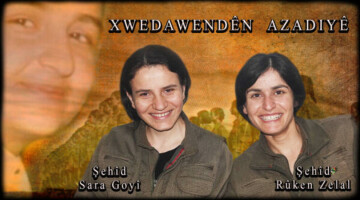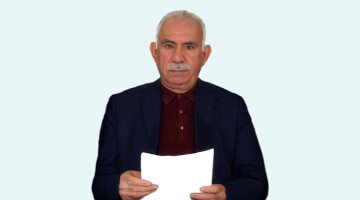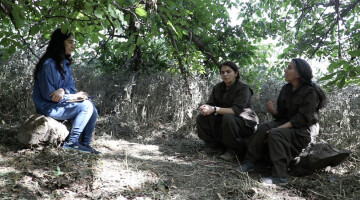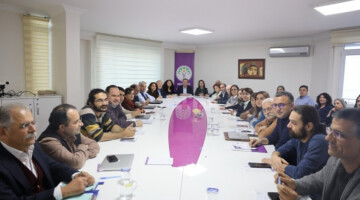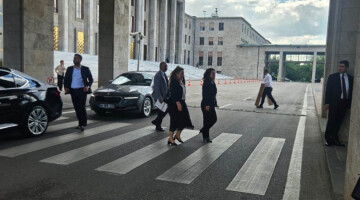We hopped into a SDF fighter’s vehicle and were on our way to Ayn Îsa. We were headed towards the frontlines where the SDF fighters are.
The driver was from the Arab community. When he saw us speaking in Kurdish, he changed the music to Kurdish songs. This has turned into a culture among the SDF fighters, if Kurdish drivers have Arab passengers, they play music in Arabic and vice versa. We saw people who left their cities on the way, they had stopped their cars and were sitting in the shade. They were waiting for their cities to be liberated so they could return home.
The SDF driver turned to us in every village we passed and said, “A friend was martyred here”, or “A gang vehicle was blown up there”.
We made it to the aqueduct. This place was important for the Baath regime so the canals filled with the waters of Euphrates could irrigate lands for villages to the northeast of Raqqa.
We saw blown up bridges and new bridges built by SDF fighters over the water ways. By the Xatoniyê village, while the villagers were tending their fields, gunfire was heard from around the village itself.
We arrived in the General Command to the west of Raqqa. A thin, slender woman was giving orders on a radio. A couple of minutes later, she greeted us. We had a German journalist with us, when he told the commander on the radio that he wanted to go to the frontlines, the commander pointed to the clashes. It must have made commander Yekbûn a little angry when the German journalist said there was no clash, because she said, “Do you know how many days of resistance it took to liberate this place? Now you say there is no clash, so easily.”
We held quiet when faced with this comment. All these villages had been liberated, but still the civilians sought refuge with the fighters and didn’t want to return to their villages. SDF fighters had just liberated the Yamamah village, and surrounded the Baath (Freedom) Dam. Fighters were gathered together, their faces covered in dust. It looked like the operation had just ended. A YPG fighter called “Cute Frenchie” in Kurdish was tidying his uniform. He had joined the YPG four months ago, and the French YPG fighter looked very determined: “This war is a humanitarian duty. I came to free Raqqa from ISIS gangs.”
After SDF fighters liberated the Tabqa Dam, they turned towards liberating Raqqa. The operation to liberate Raqqa started on April 11. Up to date, dozens of villages have been liberated to the east, west and north of the city. The operations were on hold for a couple of days due to bad weather, but the fighters are well on their way to Raqqa now.

